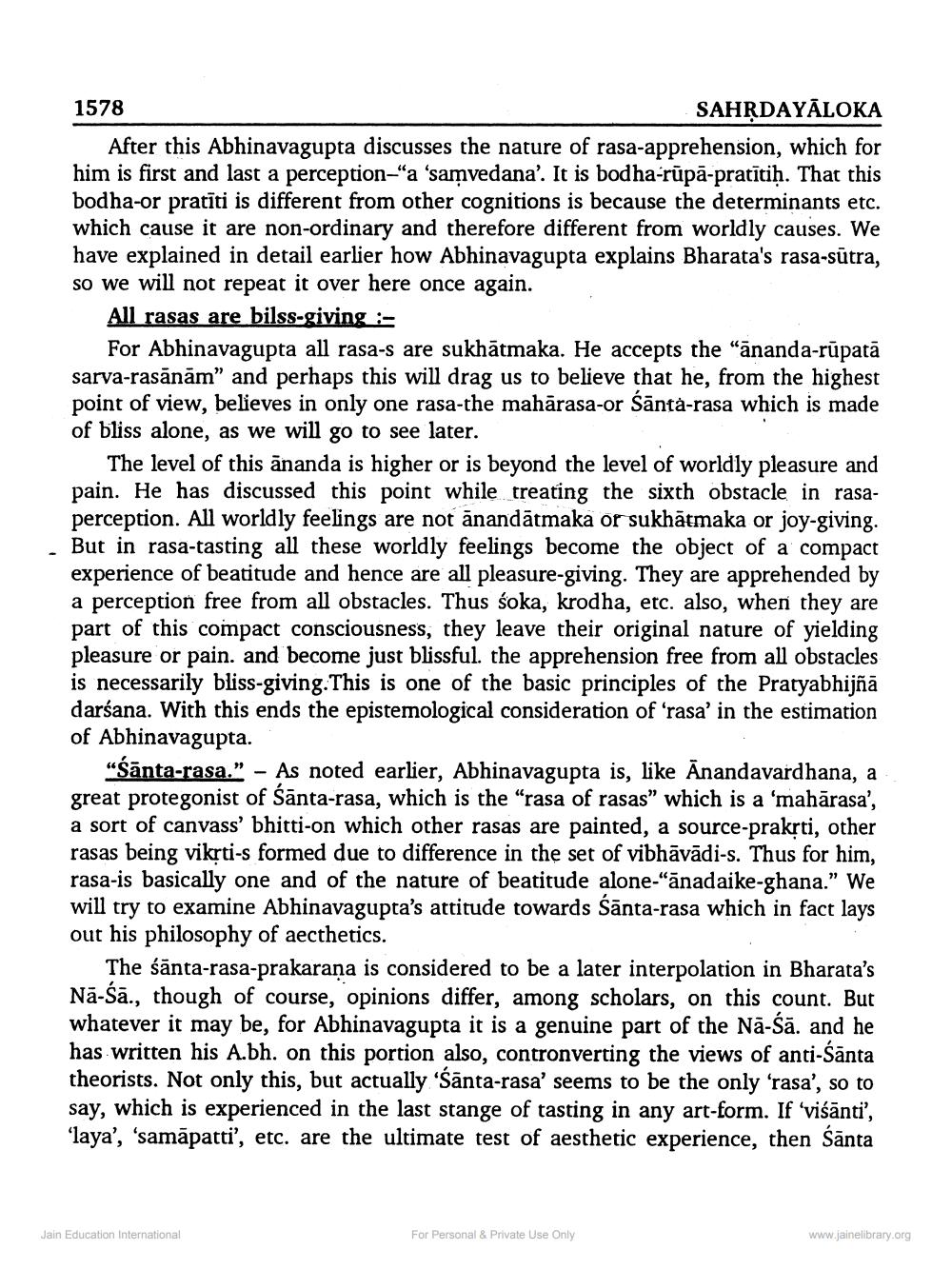________________
SAHṚDAYALOKA
After this Abhinavagupta discusses the nature of rasa-apprehension, which for him is first and last a perception-"a 'samvedana'. It is bodha-rupa-pratītiḥ. That this bodha-or pratiti is different from other cognitions is because the determinants etc. which cause it are non-ordinary and therefore different from worldly causes. We have explained in detail earlier how Abhinavagupta explains Bharata's rasa-sūtra, so we will not repeat it over here once again.
All rasas are bilss-giving :
1578
For Abhinavagupta all rasa-s are sukhātmaka. He accepts the "ananda-rūpatā sarva-rasānām" and perhaps this will drag us to believe that he, from the highest point of view, believes in only one rasa-the mahārasa-or Santa-rasa which is made of bliss alone, as we will go to see later.
The level of this ananda is higher or is beyond the level of worldly pleasure and pain. He has discussed this point while treating the sixth obstacle in rasaperception. All worldly feelings are not ānandātmaka or sukhātmaka or joy-giving. But in rasa-tasting all these worldly feelings become the object of a compact experience of beatitude and hence are all pleasure-giving. They are apprehended by a perception free from all obstacles. Thus śoka, krodha, etc. also, when they are part of this compact consciousness, they leave their original nature of yielding pleasure or pain. and become just blissful. the apprehension free from all obstacles is necessarily bliss-giving.This is one of the basic principles of the Pratyabhijñā darśana. With this ends the epistemological consideration of 'rasa' in the estimation of Abhinavagupta.
"Santa-rasa." - As noted earlier, Abhinavagupta is, like Anandavardhana, a great protegonist of Santa-rasa, which is the "rasa of rasas" which is a 'mahārasa', a sort of canvass' bhitti-on which other rasas are painted, a source-prakṛti, other rasas being vikṛti-s formed due to difference in the set of vibhāvādi-s. Thus for him, rasa-is basically one and of the nature of beatitude alone-"anadaike-ghana." We will try to examine Abhinavagupta's attitude towards Santa-rasa which in fact lays out his philosophy of aecthetics.
The śānta-rasa-prakarana is considered to be a later interpolation in Bharata's Nā-Śā., though of course, opinions differ, among scholars, on this count. But whatever it may be, for Abhinavagupta it is a genuine part of the Na-Śā. and he has written his A.bh. on this portion also, contronverting the views of anti-Śānta theorists. Not only this, but actually 'Santa-rasa' seems to be the only 'rasa', so to say, which is experienced in the last stange of tasting in any art-form. If 'viśānti', 'laya', 'samapatti', etc. are the ultimate test of aesthetic experience, then Santa
Jain Education International
For Personal & Private Use Only
www.jainelibrary.org




